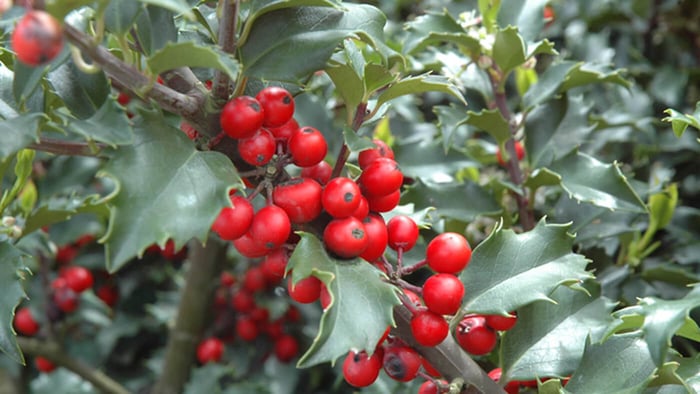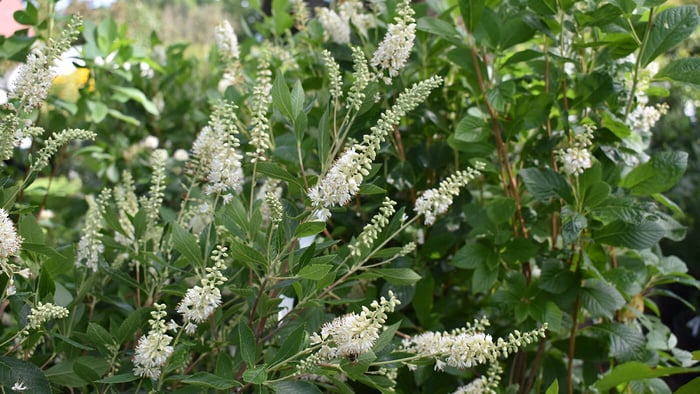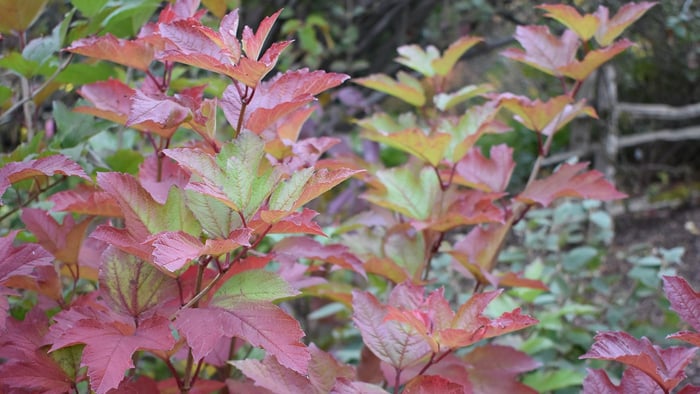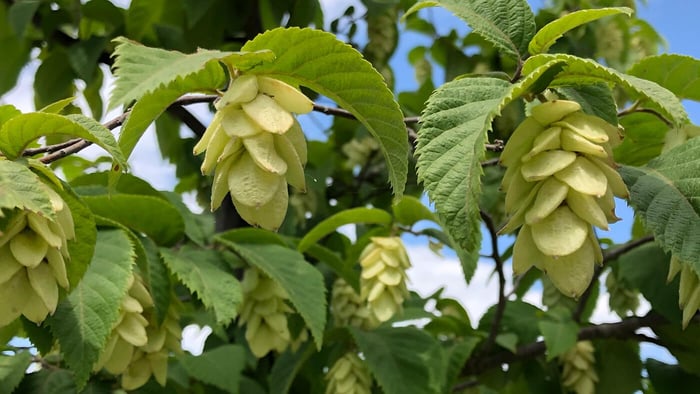
How are Ilex or Holly Varieties Different?
Holly could arguably be one of the most recognizable plants in the United States. Its spiky green leaves and shiny red berries grace holiday cards and décor every year. These plants are not the only "hollies" however. So how are ilex or holly varieties different? There are a few other species that can grow in Vermont sometimes referred to as holly that are quite different plants.
Vermont-native holly Ilex verticillata, known colloquially as winterberry, is deciduous and sports bright red berries in the fall and winter. Inkberry Ilex glabra, native to coastal New England, is semi-evergreen but has much smaller foliage and produces a small black berry.
These species all belong to the genus Ilex. They take up a large section of the Garden Center and grow in Horsford’s fields. What exactly are the differences between them?

Quick Info & Hardiness
 Winterberry (Ilex verticillata)
Winterberry (Ilex verticillata)
 Winterberry (Ilex verticillata) growing in Horsford's fields in early winter
Winterberry (Ilex verticillata) growing in Horsford's fields in early winter
Winterberry / Ilex verticillata
- deciduous (loses leaves in winter)
- non-spiky leaves
- native to Vermont
- hardy down to zone 3
 Glossy foliage of inkberry (Ilex glabra)
Glossy foliage of inkberry (Ilex glabra)
 Small black berries of inkberry (Ilex glabra)
Small black berries of inkberry (Ilex glabra)
Inkberry / Ilex glabra
- broadleaf evergreen (glossy leaves hold through winter)
- non-spiky leaves
- native to New England
- hardy to zone 4/5
 Spiky leaves and red berries of holly (Ilex x meserveae)
Spiky leaves and red berries of holly (Ilex x meserveae)
Holly
Holly - species include: Ilex x meserveae (Hybrid), Ilex crenata (Japanese Holly), Ilex opaca (American Holly), Ilex aquifolium (English Holly)
- broadleaf evergreen (glossy leaves hold through winter)
- some have spiky leaves, some don't
- some species native to New England and North America, others not native
- hardy to zone 5
Growing Conditions
Once established, winterberry thrives in soils with high fluctuations in moisture levels. Since it can grow in both standing water and dry conditions, we recommend it often for naturalized areas, rain gardens and swales, and pond edges. It is easy-going, enjoying both shade and part-sun sites.
Holly is more particular in where it likes to grow in northern climates. We recommend holly stay planted in the Champlain Valley. An ideal spot would be in a woods edge or sheltered setting with part sun. It is similar to large-leaf rhododendron or boxwood in its sun and wind tolerance. When the ground is frozen, broadleaf evergreens will not do well if exposed to harsh wind or bright sun. In all, we’d avoid planting holly on south and west sides of buildings and in open fields.
Somewhat shade-tolerant, inkberry (Ilex glabra) should be planted in full sun with moist soils. It tends to get scraggly in full shade. It has traditionally been a classic for foundation plantings and low hedges. Its zone 4/5 hardiness is similar to holly and should be planted in the Champlain Valley.
Berries & Pollination
All types have berries superb for wildlife. Winterberry however tends to have larger quantities of berries that last longer on the plant, providing food for winter resident birds and even early migrating birds. To ensure berries, plant one male plant for every 5 female plants spaced within 50' of each other. The ratio is the same for holly plants.
Inkberry has traditionally been prized as a foliage plant. Customers are more recently valuing its importance as a native plant with nutritional berries for wildlife. The nursery trade is catching up to identifying male and female plants, so the cultivars we currently sell are not sexed. If berries are your goal, plant a few or pick out plants in late summer once they do or don't have berries.



